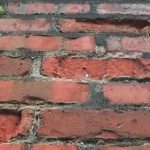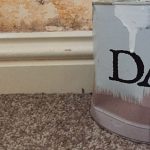The DIY Fix is reader supported. When you buy after clicking a link on our site, we may earn an affiliate commission.
Damp is something that affects a very large number of properties and people at some point. Damp problems cause persistent headaches for many, many people during the home buying process and it can also be a real pain for landlords, tenants and homeowners alike. We know we don’t want it. We know we should try to avoid it – but very few of us actually know a great deal about it! Most of us have heard of some of the key terms associated with it – rising damp, for example. Another one is a damp proof course, but what is a damp proof course? What do they do and why do we need one?
Well, here are the answers to those questions and more…
The 3 main types of damp
To fully understand what a damp proof course is and how it works it’s worthwhile taking some time first to consider the different types of damp.
The symptoms of a damp-affected home are often very similar. Isolated damp patches might start appearing on walls. Walls themselves might feel damp to the touch. Plaster or paint might have visible cracks and may start flaking away. We might also see mouldy spots appear, and all of this is often accompanied by a fairly unpleasant musty, damp smell.
These symptoms and signs are usually caused by one of three types of damp. The first two actually often have little to do with the main subject of this post (a damp proof course) but they are worth explaining.
Penetrating damp – essentially when water penetrates through from the outside of a property to the internal walls, this is is usually caused by some sort of building or structural defect, such as a leaking pipe, a cracked guttering, for example.
Condensation damp – essentially a build-up of too much excess moisture in a property, this is is usually a result of poor ventilation in a home.
Although both penetrating damp and condensation damp can be very damaging to a property, and if untreated for long enough, can be quite costly, once the root cause is identified and correctly treated, they are problems that are relatively easy to address.
However, the third type of damp – rising damp – can be more troublesome and it’s with this type of damp that you really need to know what a damp course is.
A Damp Proof Course – Every home should have one
The problem with damp, in a nutshell, is that water rises. The technical term for this is capillary action. It’s also often referred to as wicking. Basically liquid (usually water) will naturally flow in narrow spaces (such as a wall). This means that, over time, an amount of ground water will naturally rise up through the wall or the floor of a building. Indeed, most floors or walls will allow some water to do so.
Along with the question: what is a damp proof course? Another common question is: What does a damp proof course do? Well, rising damp is usually stopped by the damp proof course. A damp proof course (DPC) is a barrier that stops the water from rising.
And every home should have one. At least, that is, if the property was built after 1875. Building regulations (Part C in England and Wales) ensure this. However, properties built before the regulations came into force may not – and a damp proof course doesn’t last forever. They become worn and damaged over time. When this happens, it is the usual cause of rising damp in a property.
Types of damp proof course
Newer builds usually have a combination of a damp proof course and damp proof membrane installed during construction. The damp proof course is often a horizontal strip of bitumen felt or plastic inserted 15cm above ground level. A damp proof membrane is a sheet of waterproof material inserted under a concrete floor. Together, the course and membrane seal a property and protect it from ground water.
However, this has not always been the case and although plastic is the damp proof course material of choice these days, it always used to be slate. Slate is a highly resilient material, more than up for the job of acting as a damp proof barrier. However, if the slate cracks or slips slightly out of position, the damp proof course ceases to be effective and will need replacing.
How can a damp proof course be replaced?
You’d be forgiven for thinking that it will be incredibly difficult and expensive to replace a DPC that has failed. In fact, it is now easier than you might expect.
Technological advances mean that a new damp proof course can be injected into the walls of a property. An injectable damp proof course is where a silicone or chemical liquid is injected through a series of 12mm holes running horizontally along the wall. The bricks soak up the waterproofing liquid creating a waterproof barrier 15cm above ground level. DIY kits are also available and a variety of creams and liquids can be used.
What is a damp proof course? It’s a frequently asked question, but now hopefully you have all the answers you need.





